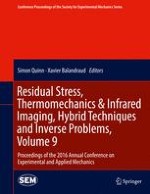Residual Stress, Thermomechanics & Infrared Imaging, Hybrid Techniques and Inverse Problems, Volume 9 of the Proceedings of the 2016 SEM Annual Conference & Exposition on Experimental and Applied Mechanics, the ninth volume of ten from the Conference, brings together contributions to this important area of research and engineering. The collection presents early findings and case studies on a wide range of areas, including:
Damage Analysis from Thermal Measurements
Quantitative Visualization
Stress Analysis from Thermal Measurements
New Approaches to Residual Stress Measurement
Residual Stress & Optical Methods
Non-homogeneous Parameters Identification
General Inverse Methods
Residual Stress Measurement by X-Ray Diffraction
